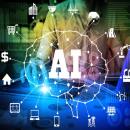Industrial Training Attachment is a process initiated by institutions to enable their students have experiences on their discipline outside classroom. The students are allowed to choose any area of their interest in their course of studies.
Depending on the institution and department, IT attachment varies from Three(3) months to one(1) year. Some schools allow their students to embark on their Industrial Training twice during their cause of studies:for example, year two(2) and year three(3) students carry out their IT experience at end of second semester while others might do once and return to school for their final year. It is quite interesting to know that at the end of your IT experiences, there is a fund allocated to you as an IT student called Industrial Training Funds(ITFs). Unfortunately, base on Nigerian setting especially for those in government owned universities, cannot access these funds despite all the forma that was filled and submitted. Maybe things have changed.
For those in computer science, this article illustrates various areas to focus your strength on during your IT experience, a building process in your career paths.
In this post, I will discuss different areas in which Computer Science Students on IT Attachment can focus on
Areas to leverage on during your IT Attachment experiences
The following are some areas in Tech niche you can channel you energy to:
Web Development:
This is a dynamic niche that involves the use of different
technologies to develop web applications. All web applications run on
browser; this implies that for you to access web apps, you need a
browser. There are basically two(2) types of website;static and
dynamic.for a static website, the content of the website does not
change anytime the website is visited. In the case of dynamic, the
content changes as a result of database integration.
Web App design and development are divided into Front-end and Back-end: if you aspire to be a front-end developer , your focus will be on building the front-end portion of websites and web applications that is, the part users see and interact with, using web languages such as HTML, CSS, and JavaScript . As a back-end developer, you are responsible for retrieving data from the stored database when processed through an application using back-end languages such as Python, Java, JavaScript, Ruby, C#, and PHP. The mentioned back-end languages are popular used languages. The three(3) part of back-end development are ; servers, databases, and application programming interfaces.
Artificial Intelligence(AI): This is the simulation of human intellectual capability by machines(robots). AI requires a foundation of specialized hardware and software for writing and training machine learning algorithms. No single programming language is synonymous with AI, but Python, R, Java, C++ and Julia have features popular with AI developers. The applications of AI include expert systems, natural language processing, speech recognition and machine vision.
In general, AI systems work by ingesting large amounts of labeled training data, analyzing the data for correlations and patterns, and using these patterns to make predictions about future states. In this way, a chatbot that is fed examples of text can learn to generate lifelike exchanges with people, or an image recognition tool can learn to identify and describe objects in images by reviewing millions of examples. New, rapidly improving generative AI techniques can create realistic text, images, music and other media.
AI programming focuses on cognitive skills that include the following:
-
Learning. This aspect of AI programming focuses on acquiring data and creating rules for how to turn it into actionable information. The rules, which are called algorithms, provide computing devices with step-by-step instructions for how to complete a specific task.
-
Reasoning. This aspect of AI programming focuses on choosing the right algorithm to reach a desired outcome.
-
Self-correction. This aspect of AI programming is designed to continually fine-tune algorithms and ensure they provide the most accurate results possible.
-
Creativity. This aspect of AI uses neural networks, rules-based systems, statistical methods and other AI techniques to generate new images, new text, new music and new ideas.
UI/UX:UI stands for User Interface and UX for User Experience. UX process focuses on putting the customer first in the design of your products. It analyses how to design the product and make it to be user-friendly. This implies, you have to make something that work well for the customers. The job of a UX designer and his or her team is to think through every step of a user's journey with the product. All parts of that journey should be memorable and add value to the user. Understanding the target user and the user journey allows designers to delight customers at every stage. UI (User Interface) design is the user-centered approach to designing the aesthetics of a digital product. In essence, they create the look and feel of a website or application's user interface. An interface is the graphical layout of the application. These interfaces should not only be functional, but they should be easy to use and visually appealing.
Graphic Print Design: This involve Graphic design for printing is a unique process and its end-product is often a design in a digital form. Print design is for physical publications, like newspapers, periodicals, and fliers. The applications use for this design are CorelDraw, Photoshop, Illustrator and In-design.
Computer Repairs/Maintenance: This is a processing of diagnosing and fixing errors in computer which involves hardware and software. Computer maintenance keeps your computer running smoothly by performing regular tasks such as deleting temporary files, defragmenting your hard drive, and running virus scans. On the other hand, computer repair is fixing problems that have already occurred on your computer through diagnosing and fixing hardware, software, or network issues. It involves troubleshooting various problems to determine the cause of an issue and then taking steps to fix it.
System Networking/Installation:The definition of network installation is the selection and placement of hardware and equipment that forms a network, or interconnected set of devices for easy communication and sharing of resources. Systems Installation means the installation of both software and hardware to get the system ready for job execution.
Data Analysis: This is the process of inspecting, cleansing, transforming, and modeling data with the goal of discovering useful information, informing conclusions, and supporting decision-making. Data analysis has multiple facets and approaches, encompassing diverse techniques under a variety of names, and is used in different business, science, and social science domains. In today's business world, data analysis plays a role in making decisions more scientific and helping businesses operate more effectively.
Data mining is a particular data analysis technique that focuses on statistical modeling and knowledge discovery for predictive rather than purely descriptive purposes, while business intelligence covers data analysis that relies heavily on aggregation, focusing mainly on business information.In statistical applications, data analysis can be divided into descriptive statistics, exploratory data analysis (EDA), and confirmatory data analysis (CDA). EDA focuses on discovering new features in the data while CDA focuses on confirming or falsifying existing hypotheses. Predictive analytics focuses on the application of statistical models for predictive forecasting or classification, while text analytics applies statistical, linguistic, and structural techniques to extract and classify information from textual sources, a species of unstructured data. All of the above are varieties of data analysis. Data integration is a precursor to data analysis, and data analysis is closely linked to data visualization and data dissemination
Project Management: Project Management:Project management is the process of leading the work of a team to achieve all project goals within the given constraints. This information is usually described in project documentation, created at the beginning of the development process. The primary constraints are scope, time, and budget. As A Project Manager , you are responsible for the planning, procurement, execution and completion of a project. The project manager is in charge of the entire project and handles everything involved, such as the project scope, managing the project team, as well as the resources assigned to the project.
As a computer scientist, it is pertinent to have good knowledge in all aspect of computing, then choose one area to focus on. In Pinfo Technologies, one of our goals is to expose tech newbies to some tech areas that will align them to excel in future with their chosen specialty in tech.
We offer the following courses as well as guide you with any project of your choice:
- => Web Development:
- => Python/Java Programming:
- => Graphic Designs:
- => Data Analysis using Excel, MySQL and SPSS
We do not stress your learning and practical process; there are different areas to be engage ranging from executing tasks from home, choosing time appropriate for you within the week, but you must complete the speculated duration for the week to enhance your learning and hands on practical.
Your IT Attachment interest should focus on us if you want your path to be aligned for career in Tech Niche.
You can share your own experience below that will be useful for those going for their Industrial Training Experience.


Tony Effiong
2023-09-28 20:00:16This article is an insight to many questions asked by IT students. This will really guide you for your choice of career paths.